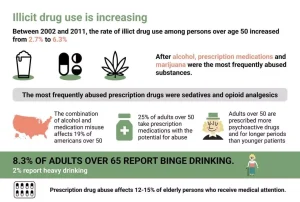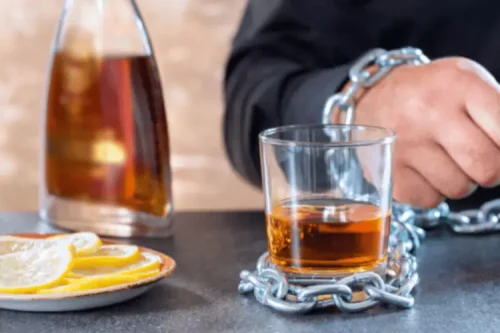
You can frame the conversation around “I” statements to express your feelings and needs without blaming others. For example, say “I feel overwhelmed when we talk about drinking at parties, and https://ecosoberhouse.com/ I need us to focus on other topics,” instead of accusing or blaming them. Therapists and counselors will document, share, and regularly update these strategies throughout your treatment.
- Another important part of your recidivism prevention plan is what to do when faced with potential triggers.
- Stress can be internal or external and may include work-related issues or conflicts in personal relationships.
- Ultimately, even if our sobriety isn’t at risk, these tools will flesh out our recoveries and add color, meaning and emotional grounding to our daily lives.
- You’ll find worksheets to recognize triggers, outline coping skills, and set goals, along with tips on managing cravings and stress.
- For this recidivism prevention activity to become more worthwhile, therapists recommend breaking down goals into smaller bits and pieces that can be achieved over shorter periods.
What to Include in a Relapse Prevention Plan Template
You can keep a list of emergency contacts, including supportive friends, family, and healthcare providers. A relapse prevention plan must be customized to the individual and their specific needs, preferences, and surrounding resources and support system. Remember, recovery is not about achieving perfection—it’s about persistence. Every day sober is a victory, and every challenge overcome is a step forward. Surround yourself with a strong support network, stay engaged in positive activities, and always be willing to ask for help when you need it.
- The National Institute on Drug Abuse estimates that 40 to 60 percent of people who were once addicted to drugs will eventually relapse.
- The tasks of this stage can be summarized as improved physical and emotional self-care.
- Clients need to understand that one of the benefits of going to meetings is to be reminded of what the “voice of addiction” sounds like, because it is easy to forget.
- Recovery is an ongoing process, so having the right tools can help you manage addiction or mental health conditions.
- A structured daily routine with adequate rest, proper nutrition, and movement can provide stability and reduce uncertainty.
- These thoughts can lead to anxiety, resentments, stress, and depression, all of which can lead to relapse.
Identifying Warning Signs
One of the best ways to manage this is by simply choosing not to attend the event; however, this is not always possible. You can plan ahead by bringing a supportive friend, having an exit strategy, and preparing responses to offers of substances. In case of emergency, have a clear plan with proactive steps, such as calling a specific person, attending a support group meeting, or going to a safe place.
My Loved One Needs Help
Navigating the path to recovery from addiction is a journey marked by moments of triumph and times of challenge. At the center of this journey, serving as a faithful compass guiding individuals towards sustained sobriety is the relapse prevention plan. According to NIDH, 85 percent of individuals relapse within a year of treatment which is why it’s so important to create a plan to stop relapse from occurring.
NA in Addiction: Understanding Narcotics Anonymous and Its Role in Recovery

Rediscovering and embracing the amazing person you are, free from the shackles of addiction. When we begin to think the old behavior will reduce the cravings, a lapse in maintaining the new behavior is likely to occur. We smoke a cigarette, avoid support group meeting, or miss our regular exercise appointment. We ignore our “slippery slope,” focused as we are on the old behavior.

Physical Relapse
Try your best to plan regular get-togethers with friends and family, as avoiding isolation and bolstering these relationships can make recovery easier. Setting SMART Goals for Successful Prevention is one of the essential steps to prepare for relapse prevention planning. It involves creating specific, measurable, achievable, relevant, and time-bound goals that help individuals and their families work towards a successful recovery journey. The clinicians should support the patients attempts at recovery regardless of how many times they tried in the past (and relapsed). Because addiction is a chronic relapsing disease, relapse can occur, though, at any time in the recovery processsome people relapse after having been in recovery for years. One of the best ways to do this is by following a technique called the relapse prevention plan.

It also outlines ways to combat those behaviors and get back on track. Peer-led group activities in treatment programs for relapse prevention can enhance engagement and relatability among group members from diverse backgrounds. It’s important to encourage all participants relapse prevention plan to take on leadership roles in planning and leading activities. This helps to build confidence and investment in the recovery process. Peer-led initiatives also foster a sense of ownership and can lead to more dynamic and responsive group interactions.
Relapse Prevention Plan: Techniques to Help You Stay on Track
- A successful plan must focus on results-oriented actions with clear objectives and measurable outcomes while taking into account potential challenges that may arise along the way.
- This could include calling your sponsor, exercising, going to a friend’s house, meditating, or going to a 12-step meeting.
- This may occur as a result of overconfidence and a complacent mindset.
- Additionally, the group should recognize and celebrate contributions to boost morale and motivation.
- Dialectical behavior therapy (DBT) is a type of therapy that combines cognitive-behavioral techniques with mindfulness strategies.